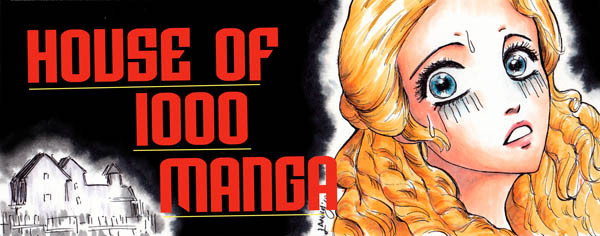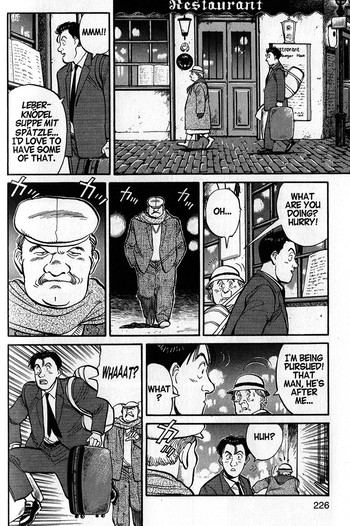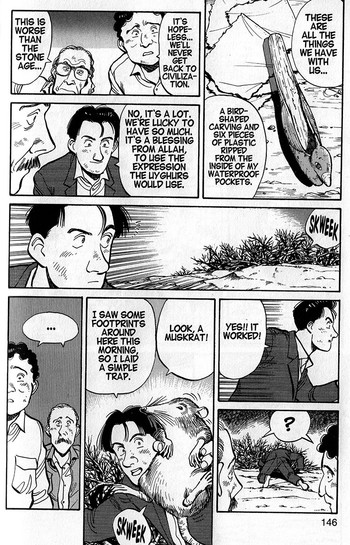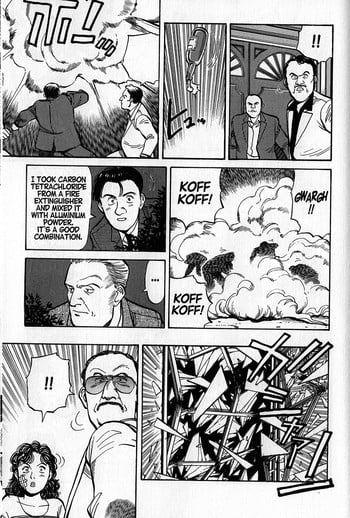House of 1000 Manga
Master Keaton
by Jason Thompson,

Master Keaton
“Insurance is gambling. It’s nothing other than betting money on the probability of people—the insured—dying or not dying within a given period of time.”
Insurance doesn't normally make people think “adventure.” But then again, manga is great at finding excitement in strange and seemingly boring topics, so is it really a surprise that Master Keaton, the story of a heroic insurance-investigator-slash-archaeologist, was the manga that made Naoki Urasawa famous? From 1988 to 1994, followed by an anime TV series and OAVs, Master Keaton was one of the most successful seinen manga of its time, and his last series written by another author before he started writing his own material with Monster. Viz considered translating Keaton way back in the ‘90s, when its short mostly self-contained stories would have been a good fit for monthly comics, but were scared off by the low sales of Pineapple Army. But now, with Urusawa famous for Monster, 20th Century Boys and Pluto, his backlist is golden. The moral is, wait long enough and even Hirohiko Araki's Gorgeous Irene will be licensed.

Taichi Hiraga Keaton is a thirtysomething archaeology professor in Japan who sidelines as an investigator for the world's most prestigious insurance company, Lloyd's of London. During the academic year he teaches classes and grades papers, but when Lloyd's calls, he's off to investigate insurance claims. But these aren't ordinary investigations, because Keaton is no ordinary archaeologist! Keaton comes from a military background (not unlike Jed Goshi in Pineapple Army), working as a survival skills instructor in the British S.A.S. “It's a special set of skills that involves entering enemy territory without any weapons and using whatever you find around you to fight and escape!” What this means in practice is, Keaton can use a spoon and a piece of tape to make a makeshift sling and knock out gunmen. He can calculate his latitude and longitude with a pendulum made from a string and a stone. He can rig up a makeshift trap to catch a muskrat, then eat the meat and turn its hide into shoes. Furthermore, he's trained in Iroquois knife fighting, Ancient Greek pankration wrestling, swordfighting and pickpocketing. He's like Sherlock Holmes meets Indiana Jones meets MacGyver…and like MacGyver, he (almost?) never kills anyone, no matter how much they deserve it.
Keaton's adventures take him all around the globe, often to places with famous culture and history. On his first mission in the manga he visits the Dodecanese Islands of Greece, where a fellow archaeologist died a mysterious death. A Japanese art student has vanished in Florence, Italy. On the railways of Europe, Keaton meets a mysterious old woman who drags him along on a quest. Even in the Taklamakan Desert, where Keaton has to endure days of harrowing desert survival, he preserves threatened artifacts and befriends the native Uighurs (“The sheikh says that you are the only one among these people who understand the ways of Islam.”). In London Keaton is caught up in cocaine and heroin wars and the sordid story of a former S.A.S. agent gone rogue. Keaton fights, he escapes dungeons and deathtraps, but he's always back in time for class on Monday. (“I can't miss the class next week, so the most time I can spend on this trip is ten days.”) His friendly, easygoing persona is cover for his massive skills, and makes him a pleasant companion for the reader: if you're looking for barely suppressed rage and violence, try another story about an ex-military badass. Keaton always maintains an air of sophistication, a faintly British sense of high culture: no battered Stetson hat or worn-out trenchcoat for him.

Before too long, we find out about Keaton's background. He's half-British, half-Japanese, and that reminds me that someone should really write an academic book on mixed-race characters in Japanese pop culture. (How do they compare to Western mixed-race heroes? Is Keaton's half-Europeanness supposed to be our key to the antique cultures of Europe, like Buckaroo Banzai's half-Japaneseness was our key to the high-tech supposedly-Japan-dominated future of the 1980s? Also, why does Michael Weiner's Race, Ethnicity and Migration in Modern Japan cost $1,300 on Amazon?) Keaton's mother was British, but she is mostly offscreen, having divorced Keaton's womanizing zoologist father. (If Keaton is Indiana Jones, his crusty old dad is Sean Connery from Indiana Jones and the Last Crusade). Keaton, too, is a divorceé, and he has a daughter, Yuriko. Although she's just in junior high, Yuriko is a genius who's as passionate about archaeology as her dad is, often protesting damaged archaeological sites and discussing ancient Indo-European languages. Grandfather, father and granddaughter get along well together, although mother and grandmother are absent…and Yuriko, of course, is the one who points out the elephant in the room. “Dad, grandpa, the two of you share the same big flaw! Both of you were dumped by your wives, and yet both of you are still crazy about them!” Although his combined Anglo-Japanese propriety makes him much too classy to admit it, Keaton still holds a flame for his ex, and unlike James Bond, he never hits on ladies on his exotic world travels.

Archaeology, travel, a classical good-guy hero and ‘80s-90s-era global politics: Master Keaton is a solid action-adventure series whose somewhat old-fashioned structure reminds me a little of Golgo 13. In fact, author Hokusei Katsushika was a former Golgo 13 staff writer, but there's actually some controversy over how much of Keaton was written by Katsushika, and how much was written by Urasawa and his longtime collaborator/editor Takashi Nagasaki. Keaton isn't as tightly constructed as Golgo, but on the other hand it has a more likeable main character, and Urusawa's character designs are miles away from Takao Saito's steely ciphers (though Saito's cold art is perfect in its way for constructing the world Saito wants to depict). I have to confess I've only read the first volume of Keaton, so I don't know where the story goes: does it head towards the novel-like, epic stories that Urusawa would become famous for, like Monster and 20th Century Boys? Or does it stay episodic, like a TV show where you can more or less follow the plotline no matter what episode you watch?
One thing that shouldn't be a spoiler is that Keaton doesn't die, since he returned in 2012 for Master Keaton: Remaster, a sequel series by Urusawa and Nagasaki taking place 20 years later. Keaton has aged well; his nose is a little bigger, his hair a little thinner, but he's still the classiest insurance investigator you ever saw. I have to confess another thing: I lied about the “this manga makes insurance exciting” part. Insurance is mostly just the excuse that gets Keaton out on an investigation, and (at least in volume one) there's rarely any detailed insurance factoids. This is a manga about archaeology, wealth, history and espionage, not about filling out claims and spending hours on the phone arguing about how much money you owe. I dare an aspiring mangaka to draw that manga, a true heroic insurance manga. I dare you.